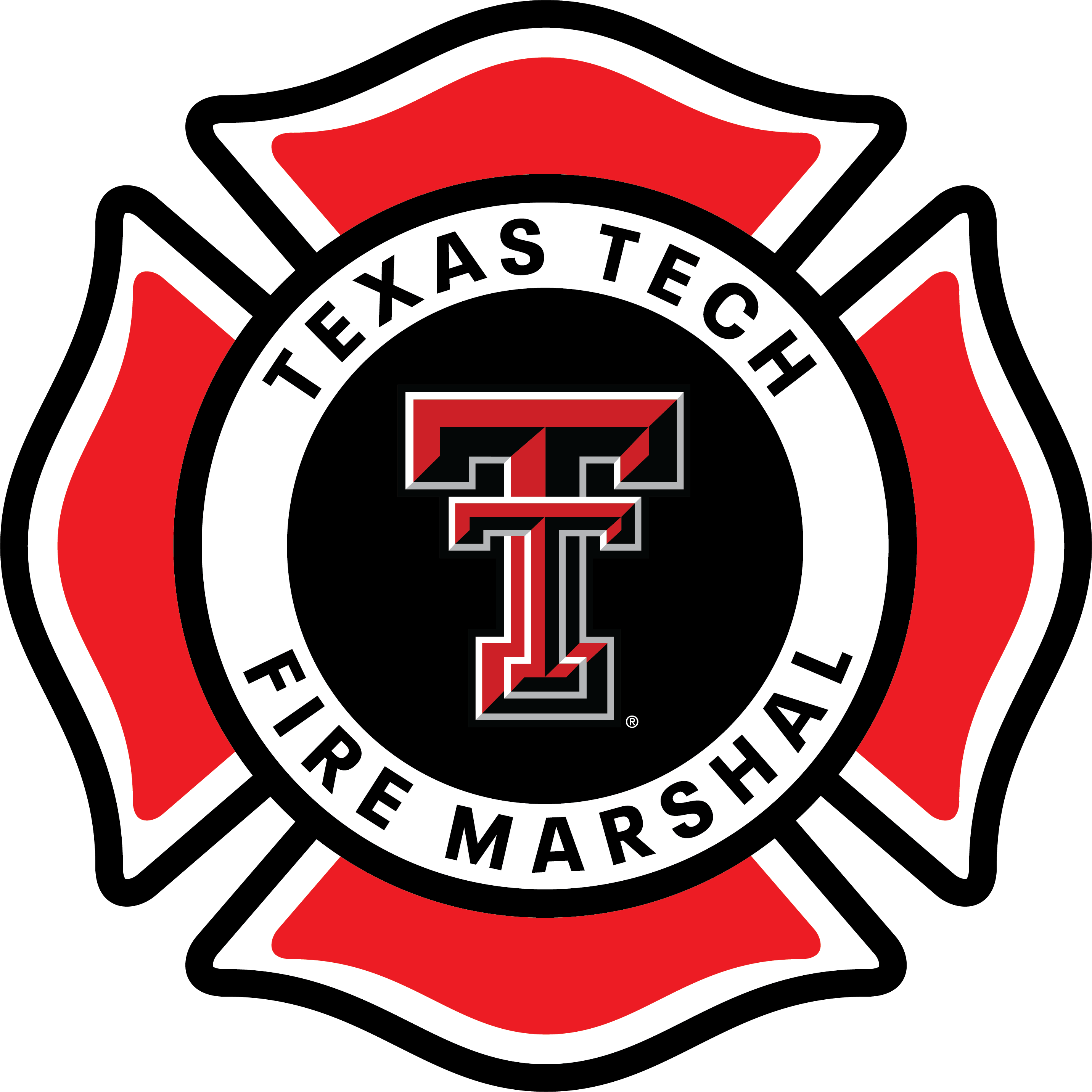Fire Extinguishers
Fire Extinguisher Types
Fires are classified based on the type of fuel that is burning. Understanding fire classifications is important because different types of fires require different extinguishing methods. Using the wrong type of extinguisher on a fire can be ineffective or even dangerous. The main fire classifications are:
- Class A – Ordinary Combustibles - involve ordinary combustible materials such as paper, wood, cloth and trash. These are the most common types of fires and are typically extinguished with water or multi-purpose (ABC) dry chemical extinguishers.
- Class B – Flammable or Combustible Liquid Fires - involve flammable and combustible liquids and gases like gasoline, diesel, oil, grease and paint. These fires should never be extinguished with water, as it can spread the flammable or combustible liquid. Foam, carbon dioxide, or dry chemical extinguishers should be used instead.
- Class C – Electrical Fires - involve energized electrical equipment such as wiring, circuit panels, motors or appliances. These fires require non-conductive extinguishing agents, such as carbon dioxide or dry chemical extinguishers. Once the power source is removed, the fire may change classification.
- Class D – Combustible Metal Fires - involve combustible metals such as magnesium, titanium or sodium. These are less common and typically found in laboratories or industrial settings. Specialized Class D extinguishers are required to safely put out these fires.
- Class K – Cooking Oils & Grease Fires - involve cooking oils and greases, especially in commercial kitchens. These fires burn at very high temperatures and require wet chemical extinguishers that can safely cool and suppress the flames without causing splashing or reignition.
The type of fire an extinguisher is rated for is listed on its label. Most extinguishers
on campus are multipurpose, dry chemical units that are rated for use with Class A,
B and C fires. There are also class K extinguishers installed on campus, specifically
in areas where cooking operations are taking place. Typically, these class K extinguishers
are only accessible to staff members assigned to that area. Always remember, if you do not feel comfortable or confident using a fire extinguisher,
do not attempt to use it—evacuate the area immediately and call 911.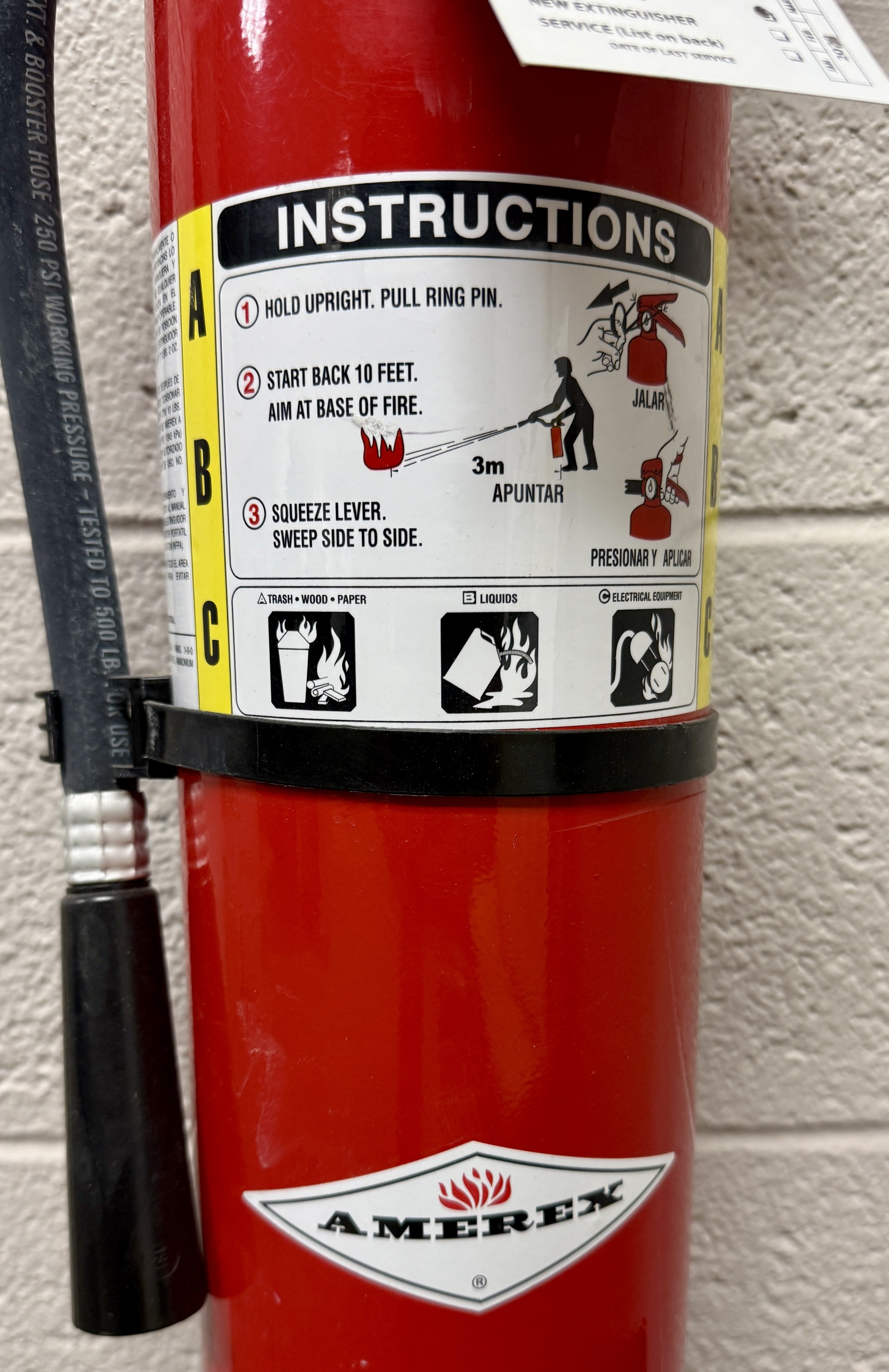
Extinguisher Locations
Fire extinguishers are kept in the following locations on campus:
- Fire Hose Cabinets – large metal cabinets commonly located in the walls of exit corridors. This is the most common location for fire extinguishers in older campus buildings.
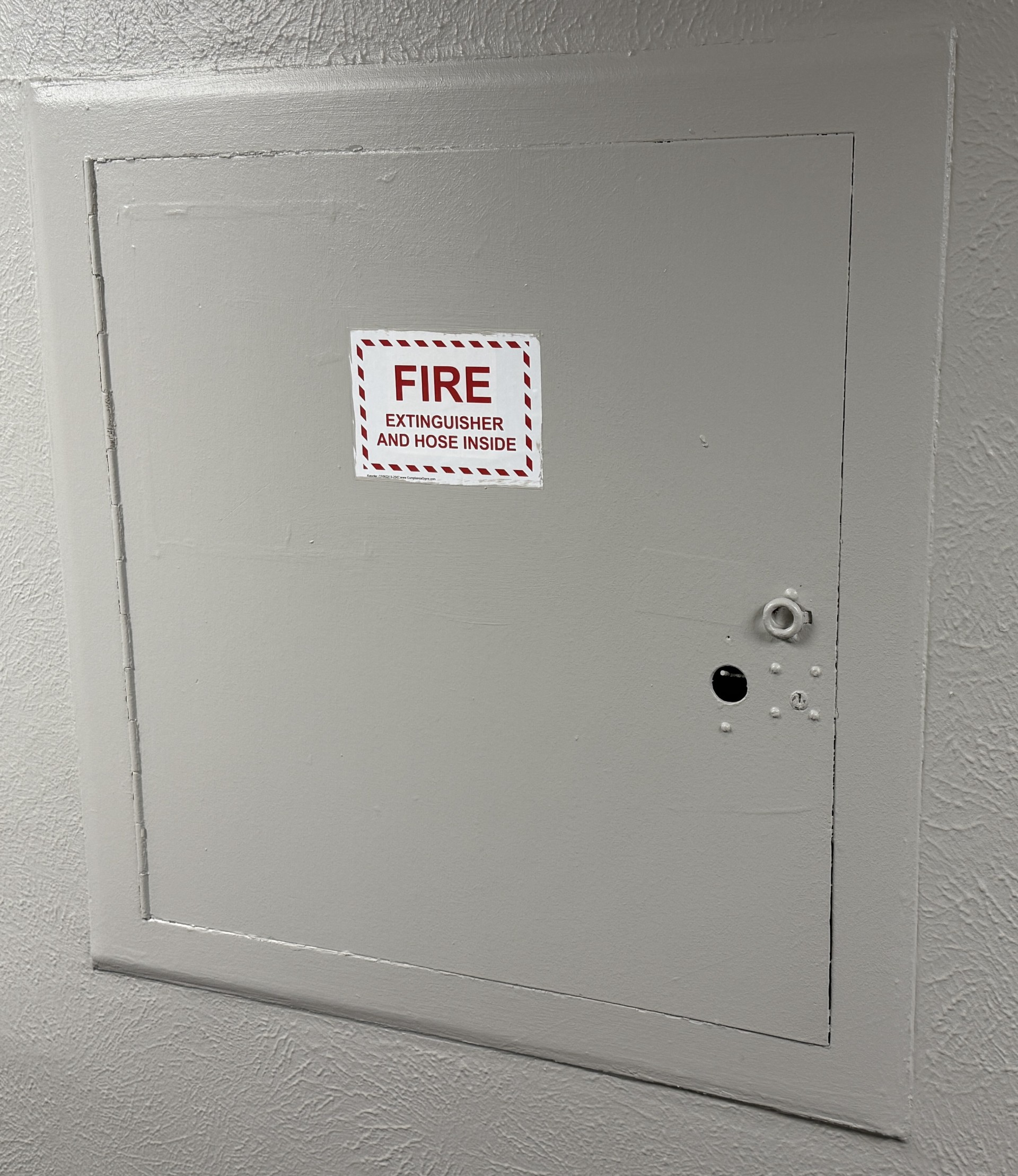
- Fire Extinguisher Cabinets – smaller cabinets usually located in exit corridors and recessed into the walls.
This is a common fire extinguisher location in newer buildings.
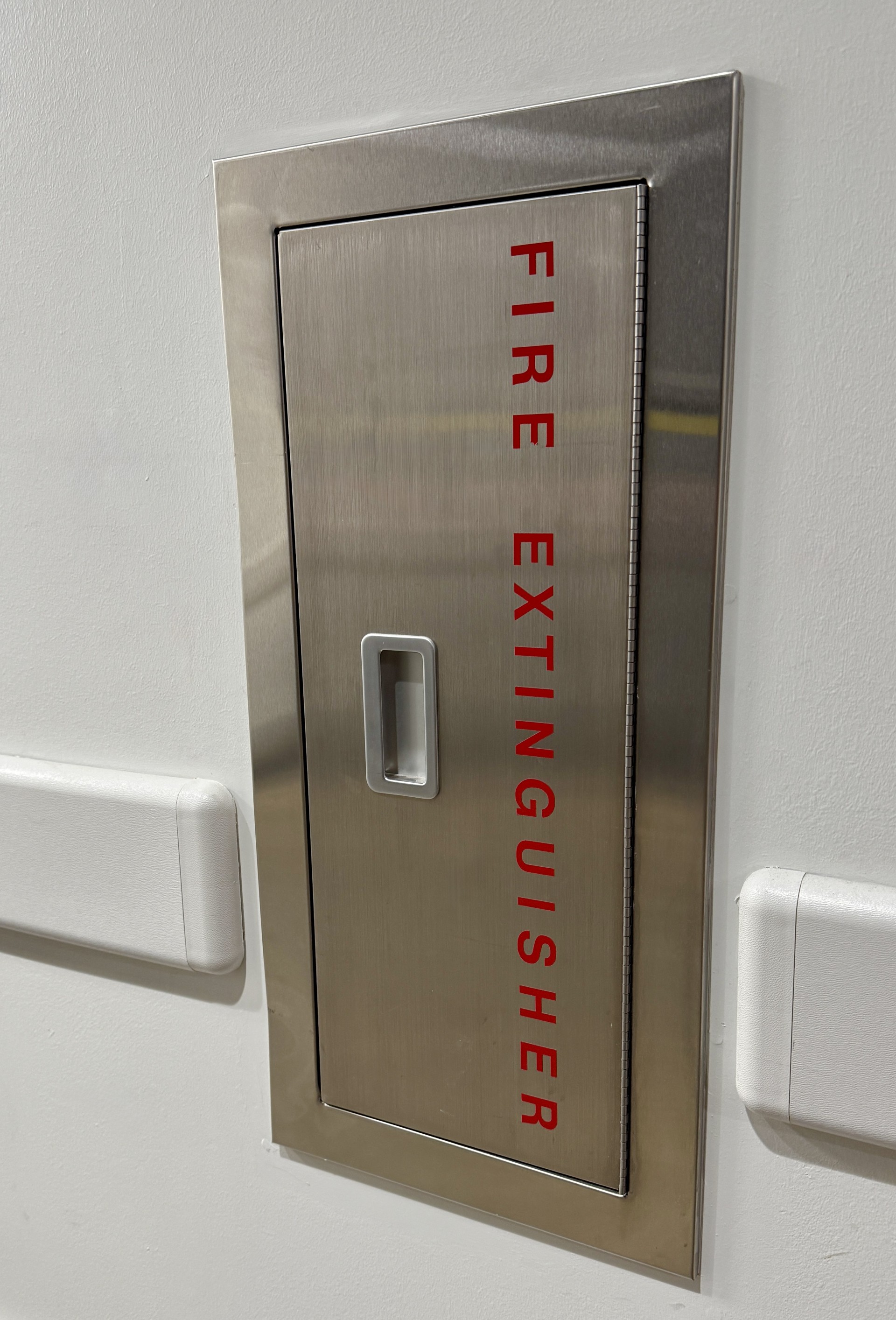
- Wall-Mounted Brackets – these brackets hold extinguishers that are not stored in cabinets. This method keeps extinguishers in plain view on the walls and is most common in laboratory work areas, workshops, kitchens, large office suites and mechanical rooms.
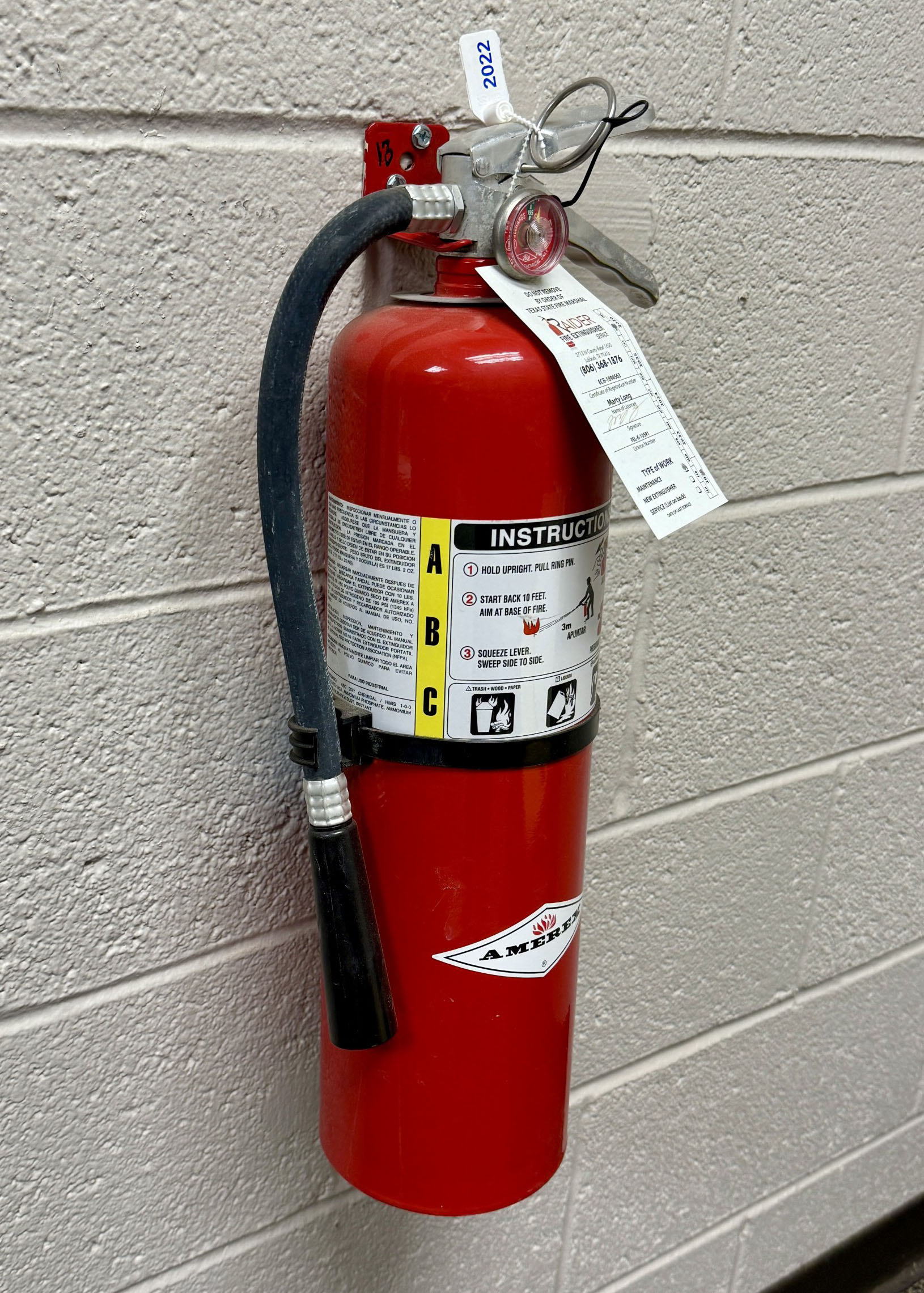
Extinguisher Inspections
Extinguisher Request
Using a Fire Extinguisher
Using a fire extinguisher is simple — just remember the acronym P.A.S.S.:
• Pull the pin
• Aim the nozzle at the base of the fire
• Squeeze the handle
• Sweep the nozzle from side to side at the base of the fire
While the steps are easy to follow, knowing when to use a fire extinguisher is just as important. Fire extinguishers are only effective on small fires in their early stages — typically no larger than a wastebasket. If the fire is spreading quickly, producing heavy smoke, or putting you in danger, get out and call 911. Your safety always comes first.
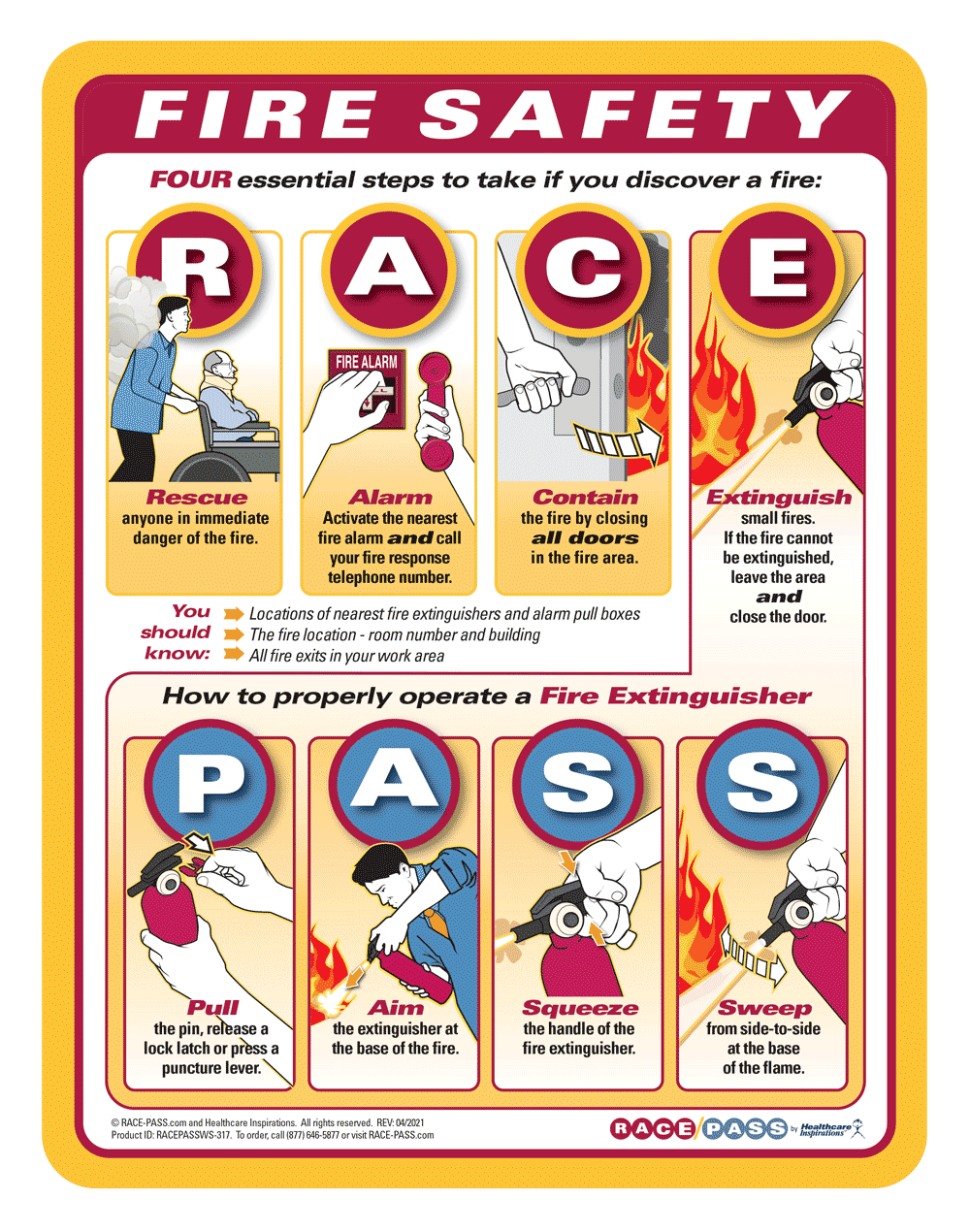
Texas Tech Fire Marshal
-
Address
413 Flint Ave., Lubbock, Texas 79409 -
Phone
806-742-0146 -
Email
fire.safety@ttu.edu

